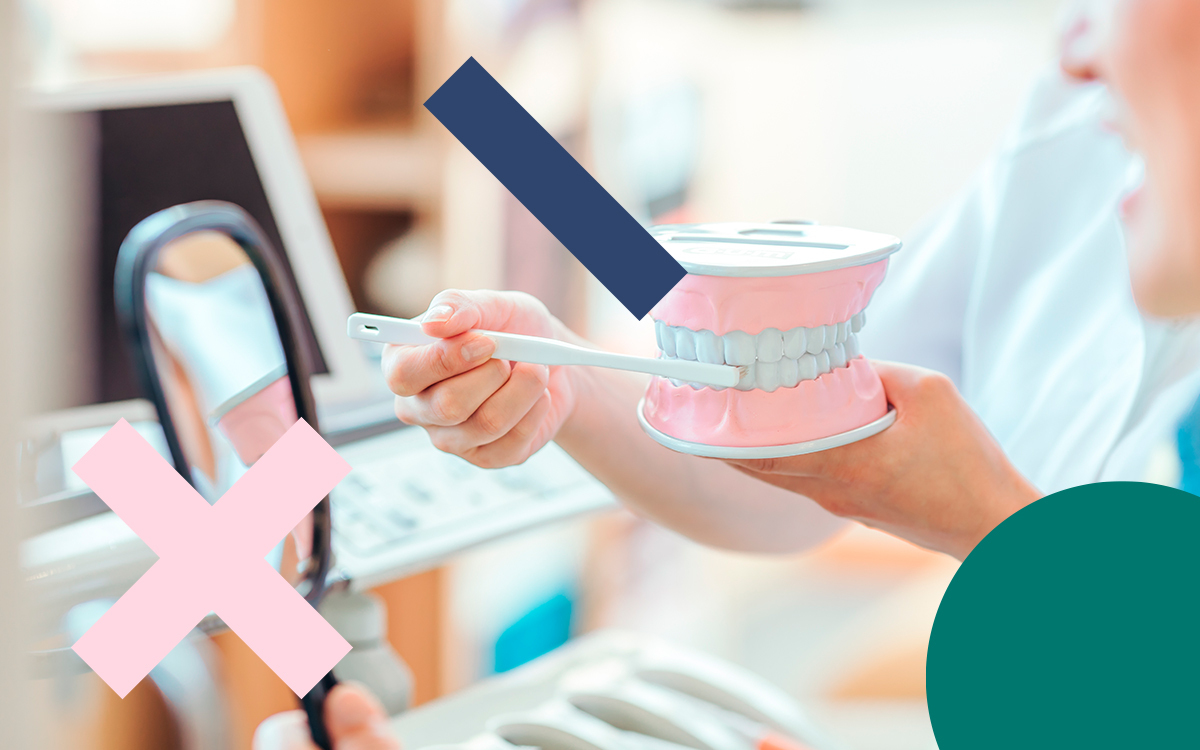 Oral health
Oral health
How to keep your breath fresh?
Halitosis or bad breath is known as the set of unpleasant odors that emerge from the oral cavity. This is a fairly common problem in...

Oral candidiasis, or thrush, is a fungal infection resulting from the uncontrolled growth of the fungus Candida albicans in the oral cavity and/or throat.
Driven by certain circumstances such as antibiotic misuse, immunosuppression or diabetes mellitus, oral candidiasis is often responsible for the appearance of a white plaque on the mucous membranes of the oral cavity and/or throat, sometimes associated with symptoms such as: burning sensation in the mouth, pain when chewing and/or swallowing, abnormal taste in the mouth and lack of taste perception.
For the diagnosisof oral candidiasis, a clinical examination and anamnesis are usually sufficient; however, it is sometimes necessary to biopsy the lesion.
Treatment usually requires the use of antifungal drug therapy.
Candidiasis is an infection caused by the fungus Candida albicans, characterized by mucocutaneous lesions, fungemia and sometimes focal infections in different places, mainly in the vagina and mouth. The latter is called oral candidiasis, and can affect the individual at any age, although it is more frequent in children.
It is easily recognized by the appearance of a white, stained plaque on the mucous membranes of the oral cavity, especially on the tongue, reminiscent of the thrush flower.
The fungus Candida albicans lives physiologically in human mucous membranes and plays a decisive role in the digestion of sugars. When present in minimal and physiological quantities, it is considered an element of the bacterial flora, that group of good bacteria that protect the most delicate mucous membranes and contribute to the perfect assimilation and fermentation of certain nutrients.
However, in some cases, the behavior of Candida albicans can change and become pathogenic, attacking the mucous membranes it usually protects. This can occur for several reasons, firstly, a temporary lowering of the immune defenses. When a Candida albicans infection occurs, the proliferating fungi are no longer considered healthy and, in that case, if they come into contact with another person, they are infectious. Transmission in the case of oral Candida can occur through the exchange of fluids, such as kissing, or by sharing kitchen utensils.
Oral candidiasis arises when, for whatever reason, the defense mechanisms intended to control the proliferation ofCandida albicans in the mouth and throat fail .
Among the factors that affect the efficacy of defense mechanisms are:
It should be noted that, although it occurs very rarely, even people in good health who do not fall into any of the above risk categories can develop oral candidiasis.
Fortunately, recognizing oral candidiasis is very simple since it presents clear and evident symptoms from the, usually no specific test is necessary to diagnose candida, but a check-up with the family doctor, the dentist or the pharmacist is enough. Only in cases where there are continuous recurrences of oral candidiasis is it advisable to follow a thorough diagnostic procedure to identify the hidden causes, the dentist being the most appropriate professional to perform this task.
The initial symptoms of oral Candida consist mainly of altered taste, redness and the presence of thick, white, bulky patches inside the mouth and on the tongue. In children and infants, the phenomenon is much more noticeable, as their oral cavity becomes completely white, as if covered by pads that start from the tongue and merge into a more compact mass; whereas, in adults, the symptom of oral candidiasis is limited, in most cases, to small whitish or yellowish plaques in the form of a mouth ulcer, which do not heal quickly.
Occasionally, other symptoms may appear, such as frequent pain in the mucous membranes, which may range from mild discomfort with an itching sensation to intense burning with bloody discharge. Often there is also a feeling of swelling of the lips, mouth and throat with swallowing problems; while fever, sweating and intestinal or gastrointestinal disturbances are rarely observed.
The treatment of oral candidiasis is based, firstly, on pharmacological therapy with antifungal drugs, the aim of which is to eliminate the fungal colony responsible for the infection; secondly, it involves special attention to oral hygiene.
The antifungal drugs most commonly used in the presence of oral Candida are fluconazole, clotrimazole, miconazole and nystatin: the first belongs to the triazole category; the second and third are two imidazole derivatives; finally, the fourth is an antibiotic with antifungal properties.
If fluconazole, clotrimazole, miconazole and nystatin are not effective, the pharmacological treatment becomes itraconazole, another triazole, or amphotericin B, a polyene macrolide.
The route of administration of the above-mentioned drugs varies according to the severity of the infection. In the case of mild or moderate infections, it is orally, through capsules or tablets; in the case of severe infections, it is intravenously.
The main measures to prevent oral candidiasis are:
For people with diabetes mellitus, blood sugar levels must be kept under control, through diet, physical activity and possibly medication.
Oral candidiasis, also known as thrush, is a condition that occurs when the fungus Candida albicans, a microorganism commonly found in our microbial flora, proliferates uncontrollably. Anyone can develop oral thrush, but infants, children and the elderly, or people with a compromised immune system due to diseases such as HIV, are more vulnerable.
In infants, the disorder usually resolves within a few days. In otherwise healthy adults, most cases of oral candidiasis resolve spontaneously within one to two weeks without any treatment, but the physician may prescribe an antifungal solution to accelerate and promote healing.
Most physicians or dentists can diagnose candidiasis simply by looking at the lesions, but if the patient, physician or dentist suspects the presence of another disease associated with candidiasis, it is important to perform an objective examination and blood tests to detect the problem.
 Oral health
Oral health
Halitosis or bad breath is known as the set of unpleasant odors that emerge from the oral cavity. This is a fairly common problem in...
 Oral health
Oral health
To achieve a complete oral hygiene, there are multiple brushing techniques that are highly effective. Depending on the preferences of each user, and adapting to the specific needs of each...
Driven by certain circumstances such as the misuse of antibiotics, immunosuppression or diabetes mellitus, oral candidiasis is often responsible for the onset of...